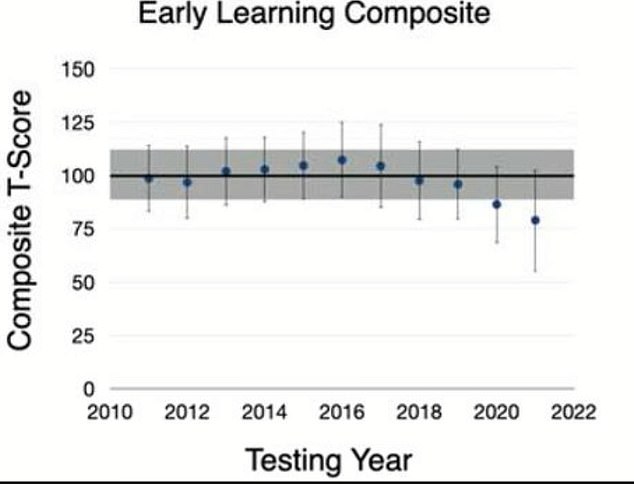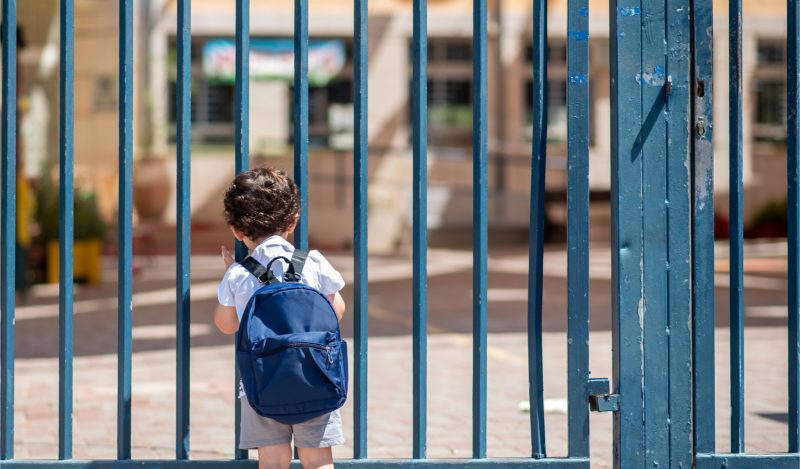Impact of School Closures
Because of lockdowns, over 1.5 billion young people, 90% of the world’s children were out of school in April. Many of these children are still out of school, or receiving a haphazard education online. Probably for nothing, too — A July 2021 study by the British government concluded that schools don’t even spread COVID.
Loss of a few months’ schooling can adversely affect children for the remainder of their lives. An educated workforce is the backbone of an economy. Any interference with primary or secondary education can reverberate throughout the economy once students come of age.
A number of studies point to serious trouble down the road for children and youth who have lost more than a few weeks of school. Individuals who missed weeks or months of school during Hurricane Katrina and are now young adults, and some experts think that the school that they missed is a major factor for the state of Lousianna having the highest rate of adults out of school or work in the US. Children in Pakistan who lost 3 months of school due to an earthquake in 2005 were found four years later to be 1.5 years behind their peers who had not missed school. This suggests that missing school may create a cascading effect.
Studies of children who have missed out on school due to a teacher strike give us indication of the effect that lockdowns can have on education interruption, apart from the direct trauma of the situation. An analysis of teacher strikes on the labor market in Argentina revealed that a cessation in schooling had a long-term impact on students, reducing educational attainment, likelihood of being employed, and income for them by the time they reached 40 years of age. A Belgian study of a teacher strike in French-speaking schools in 1990 concluded that affected children were less likely to pursue post-secondary education when they were older.
In developing countries, the lockdown has meant a complete cessation of education. Education in wealthy nations has transitioned to online delivery for the most part. However, online education is not equivalent to a classroom setting for a number of reasons.
Possibly the most important reason is that it may not actually be occurring. Not every family can afford for every child to have his or her own computer. Moreover, children require parental supervision to maintain a disciplined routine. There may not be an adult in the house to enforce the child’s online education.

Temporary school closures are associated with lower incomes and educational levels.
The child’s parents may be at work or they may be too preoccupied with dealing with lockdown stress themselves to give their children proper attention. According to a survey in the UK, 55% of teachers in less affluent neighborhoods thought that their students were getting less than an hour of education per day. In a 7000-household survey by UNICEF in the Middle East and North Africa, almost 40% of parents were dissatisfied with distance education; many dismissing it as ineffective.
An October 2020 study by Bellwether Education Partners estimated that 3 million American primary and secondary students have been totally absent from the education system since March 2020. These are children and youth that have not attended school nor participated in distance education. UNICEF announced in March 2021 that one third of children whose schools had closed have not been able to study by distance.
In March 2022, UNICEF release a report on how the pandemic response has affected children in 35 developing countries. The picture of education of children during school closures was even worse than previously thought. According to the report, there was very little education of children occurring while schools were closed. In only 14% of households with “few children” did a child complete a school assignment. That figure drops to 10% for households with “many children.”
The Netherlands underwent only a relatively short lockdown (8 wk) and features an equitable system of school funding and the world’s highest rate of broadband access. Still, our results reveal a learning loss of about 3 percentile points or 0.08 standard deviations. The effect is equivalent to one-fifth of a school year, the same period that schools remained closed.
Engzell, Frey & Verghagen, Learning loss due to school closures during the COVID-19 pandemic, April 2021¹
There may be no benefits to children trying to undergo schooling from home. A survey by UK’s Children’s Commissioner’s Office found that 41% of children experienced greater stress from schoolwork and tests since schools closed.
Children will be grappling with lockdown trauma for many years to come. The gap in their education, whether it is by a complete cessation of schooling in their community, the poor quality of online education, or non-compliance with online education, their future may be drastically affected for the worse. The foreseeable result will be lower educational attainment, less employment, and lower incomes in their future. The Brookings Institute has calculated that a brief cessation in education due to lockdowns will cost $10 trillion in averted future income. Write to your Ministry of Education and demand a full return to in-person education.

A study of 1,600 children by Brown University in Nov. 2021 found that the children’s IQ has fallen an eye-popping 23% since the pandemic began. Masking and distancing are suspected causes. ARTICLE
ESSENTIAL READING


